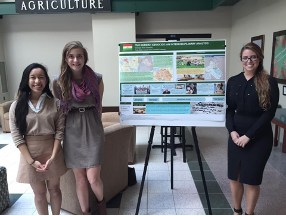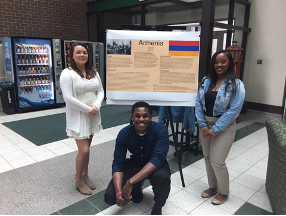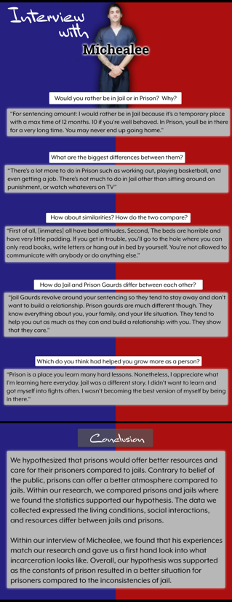The courses that I most frequently teach are statistical methods (graduate), gender & justice (undergraduate) and the criminology of genocide (undergraduate). My courses on genocide have been taught as general education courses, and variations have been offered as major courses in criminal justice and the Interdisciplinary Studies degree.
Teaching Philosophy
My personal teaching philosophy is based on active and engaged learning rooted in critical, feminist, and queer pedagogies. For me, this means that I place women and minoritized groups in the center of the discussion, and that I do not accept the status quo view of the criminal justice system (i.e., I do not assume the system “works” or is fair to all citizens). Critical pedagogies help to sharpen students’ critical thinking skills. Rather than accept the status quo, critical pedagogies encourage students to question knowledge rather than accept it without thinking. In my classes, students are encouraged to avoid making assumptions and carefully analyze reliable sources of information. Critical pedagogies also reject traditional assessment methods, such as standardized tests. Assessments are rooted in critical thinking and evaluation rather than rote memorization.
Feminist pedagogy is a form of critical pedagogy with a special focus on the patriarchal nature of our society, the fact that power is not distributed evenly in our society, and that race, gender and sexuality must be studied with an intersectional perspective. While I use methods rooted in feminist pedagogy in all classes, these methods are most relevant in my classes on gender, sexuality & justice.
Queer pedagogy encourages us to rethink traditional categories and definitions, and not solely restricted to gender and sexuality. It compels instructors to abandon assumptions of heteronormativity and develop a safe space for LGBTQ+ students to learn and study. For example, queer pedagogy encourages instructors to dismantle traditional concepts in class, and ask, “where did this come from” and “who created this term”? This is particularly useful when studying the gender binary, for example, but can be used for a host of other concepts.
Adopting these pedagogies has forced me to decolonize my syllabus—to ensure that diverse voices are represented and that work by white men does not form the basis of readings. In addition, I make sure that students hear not only from academics but from those with lived experience in the justice system.
Finally, critical, queer, and feminist pedagogies recommend encouraging students to be activists—to take action against injustice and apply scholarly knowledge to improve communities.
Active and Engaged Learning
I generally reject lecture as a form of instruction, which places students in the role of “passive listener”. When lectures are necessary, I keep them short with discussions/applications interspersed throughout.
Effective learning in classes on statistical analysis and research methods requires hands-on, active learning. All my statistics courses are taught in computer labs, where students are able to learn statistical programming and advanced concepts.
In my undergraduate classes, we critically assess sources of knowledge, especially those from mass media. We question whether media sources are truly unbiased and evaluate the quality and leanings of media outlets so students can leave the course with a better understanding of how the media frames news stories, and which outlets are more likely to frame stories in different directions. I present alternative viewpoints and ask students to debate and discuss controversial issues respectfully. Much of this is done in small group discussion, with some large group discussion to keep students engaged.
Innovation and use of technology
I applied to use our Rooms for Engaged and Active Learning (REAL Classrooms) in 2014 and have used them since my training was completed.
| In 2016 I created an introductory video for my students, which can be viewed here: https://youtu.be/dzzXMGRYpF0 |  |
The large screen is for use by the instructor, but students can hook up to the small screens to share their work in groups. The room also has white boards for creating diagrams, lists, and anything else groups need to track their work
I am also an avid user of social media in the classroom and find different outlets can provide very different experiences for students. Facebook, Twitter, and Instagram can all be used with different ends in mind. After experimenting with several different outlets, I decided to focus class materials specifically on Facebook.
| For example, several years ago I created a Facebook page for my undergraduate genocide classes. Students liked and shared the page, and now over 1,200 people follow the Facebook page “Genocide and Human Rights Research at MSU” (https://www.facebook.com/genhrmsu). When actively teaching a course, I post stories relevant to class discussion and encourage students to comment for extra credit. |  |
Technology can also be used to facilitate communication between students and faculty. I typically use Slack, Group.me, and most recently Discord to communicate with students and encourage discussions in a more interesting (and modern!) method than most LMSs provide.
Engaging activities
The science of learning indicates that lecture is not an effective teaching method. In my courses, I engage students through activities designed to apply course concepts to real-world situations. We also focus heavily on the findings from academic research and their policy implications.
Most activities in my REAL classrooms are small-group discussions. These change format throughout the semester, but many involve a research component—students must study an issue, debate with their group mates, and suggest policy solutions to the problems under study. I frequently use “jigsaw” exercises, in which students spend time becoming experts on a topic, then changing groups to share knowledge with others. This is especially useful in interdisciplinary classes, where students can take a deep dive in to one social science discipline (such as political science), and then come together with others who study economics, sociology, geography, and other areas to develop interdisciplinary solutions to social problems.
Meaningful Assessments
Assessing student learning can be a challenging enterprise. Traditional exams, especially exams with multiple-choice items, tend to test a student’s ability to remember facts rather than engage in higher levels of learning. I use Bloom’s Taxonomy as a framework to develop assessments that assess students’ abilities to apply, analyze, and critically evaluate the material presented in class.
In the images below, students in SSC499 present their final group projects in our mini-research conference in May. We hold the event in a public space and encourage students and faculty to attend. One of the highlights is when parents and family are able to attend and converse with their student about what they have been studying in my class.



I also allow students to create their own assessments to demonstrate knowledge. They have been very creative, and have created short documentaries, podcasts, posters, flyers, handouts, and other ways of sharing and disseminating information.
This group from Spring 2019 created an infographic about incarceration in the United States:
In addition, most of my assessments are low stakes to minimize stress and anxiety over assessments, which creates a positive learning culture in my classroom.


